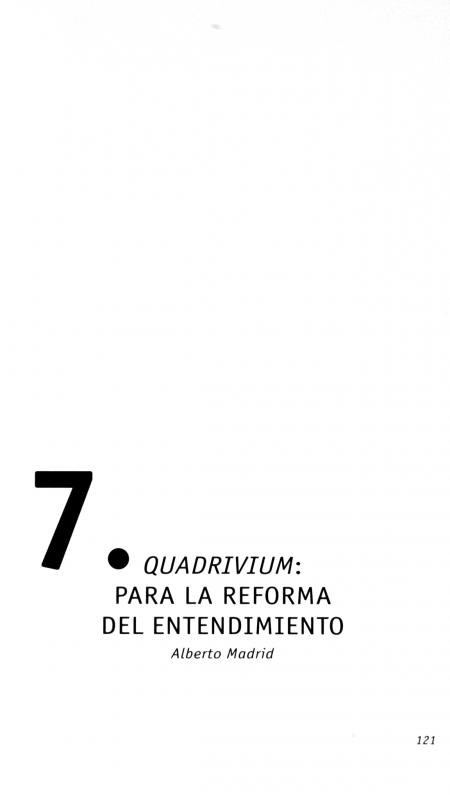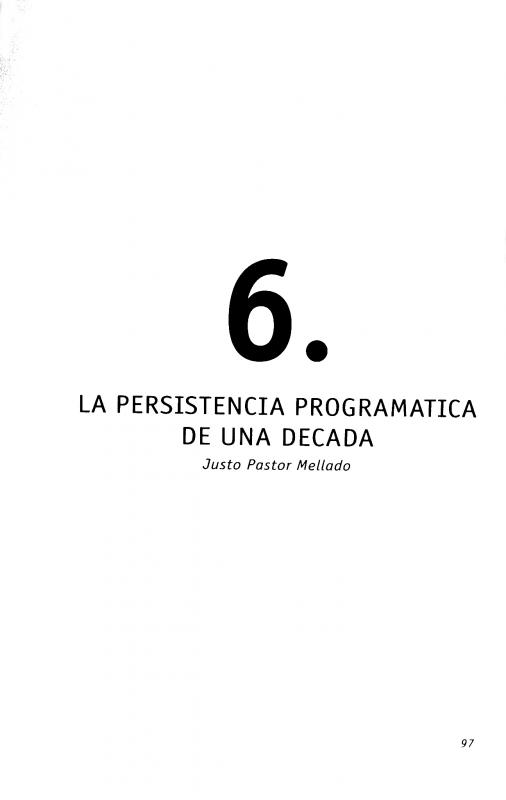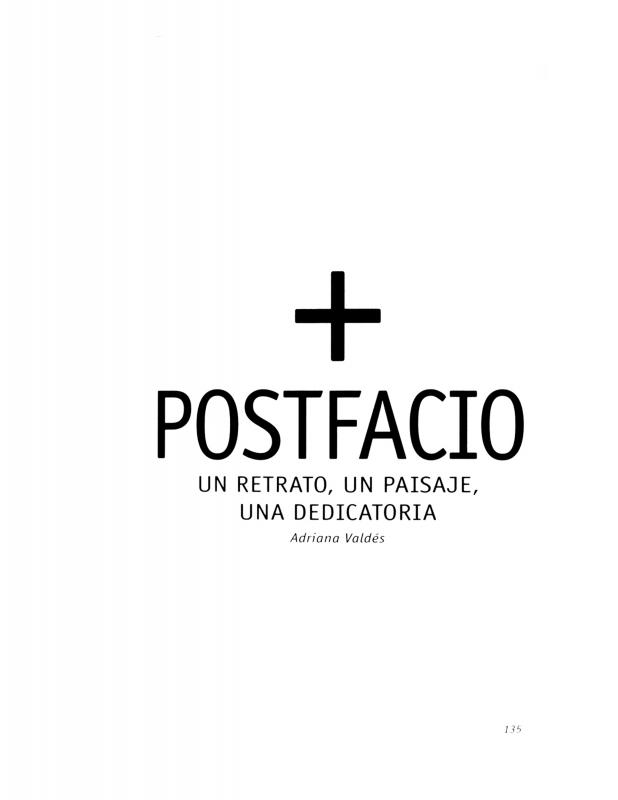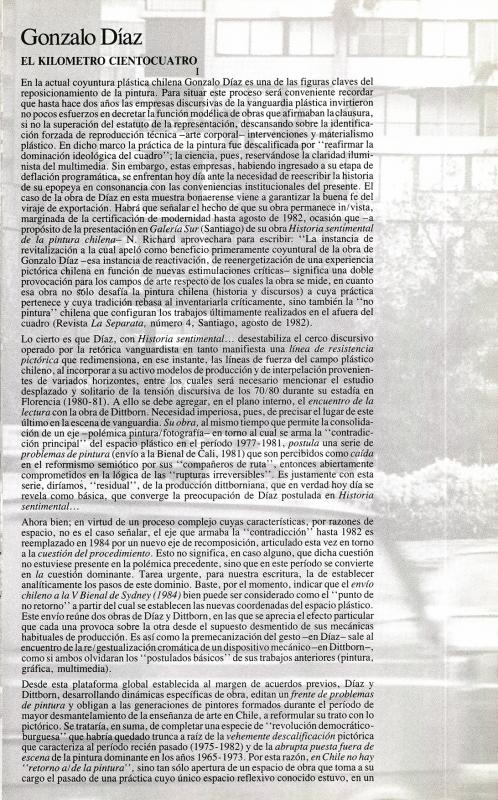Unidos en la gloria y en la muerte, the installation by Gonzalo Díaz (b. 1947), was exhibited from 1997 until early the following year. During that same time, the artist was showing Quadrivium at the Galería Gabriela Mistral. Both works were complex installations based on a range of different elements. [On this subject, see the following texts in the ICAA Digital Archive: “La cuna del delfín” (doc. 735850) by Pablo Oyarzún; “Quadrivium: para una reforma del entendimiento” (doc. 750181) by Alberto Madrid; “La persistencia programática de una década” (doc. no. 735491) by Justo Pastor Mellado; and “Un retrato, un paisaje, una dedicatoria (a manera de postfacio)” (doc. 735474) by Adriana Valdés.]
The project consisted of a text that was created with neon light and projected onto the facade of the museum where the name of the exhibition and the sculpture of Rebeca Matte (1875–1929) could be read covering the letters that spelled the name Museo Nacional de Bellas Artes. Inside the museum, on the walls of the room devoted to Matte’s work, Díaz placed levers—of the kind used on construction sites as wedges to lift something—that supported a neon text showing excerpts of the Civil Code written by Andrés Bello (1781–1865), the Chilean-Venezuelan intellectual, politician, jurist, and diplomat, who was also the first rector of the Universidad de Chile.
Gonzalo Díaz, the visual artist who studied at the Universidad de Chile, created an early body of work that challenged the way art, especially painting, was traditionally taught. Mellado pointed out that Díaz’s exhibition Historia sentimental de la pintura chilena (1982) prompted a “repositioning of Chilean painting” in light of experimental and conceptual practices that were embraced in Chilean art circles in the late 1970s. [For more information on this subject, see “Gonzalo Díaz: El Kilómetro cientocuatro” (doc. no. 734722) by Mellado.] The cultural critic Nelly Richard (b. 1948)—who coined the phrase Escena de Avanzada as an umbrella term for a wave of interventions, performances, and experimental works—devoted a chapter in her book Margins and Institutions. Art in Chile Since 1973 (1986) to a review of works that challenged the painting tradition, including those by Díaz. [See “Return to the pleasurable” (doc. 743686).] After spending years exploring and experimenting with painting, Díaz started creating installations; his work Pintura por encargo (1985) was an installation that included a painting.






